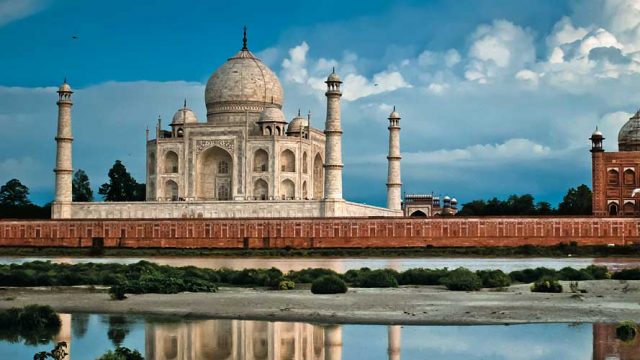A severe thunderstorm in western Uttar Pradesh on Wednesday night played havoc at the Taj Mahal complex. Visitors will no longer be able to see the 12 ft metal pillar at the entry gate, referred to as Darwaza-e-Rauza as it collapsed as the wind speed crossed 100 km per hour during the thunderstorm. It’s said the pillar fell past midnight on Thursday. The minaret and dome on it broke into several pieces. There have been no reports of any casualties.
The Taj Mahal, one of the most popular tourist attractions in the country, was built in the 17th century by Mughal emperor Shah Jahan in the memory of his wife Mumtaz Mahal. It attracts more than seven million visitors a year. The Darwaza-e-Rauza provided visitors the first glimpse of the architectural marvel.
According to other reports, the main monument was also affected during the rainfall while that 40-minute long rainfall in the region. The authorities have said that restoration work has already begin. Not just the Taj, but heavy rainfall was reported from other parts of the state too.
The Taj Mahal has recently been in the news with the Archaeological Survey of India (ASI), which looks after the maintenance of the iconic site, claiming the monument is at risk of losing its sheen and structure due to increased pollution levels in Agra. But that doesn’t deter the thousands who visit the mausoleum everyday. The complex lies 230 km away from Delhi and is easily accessible by road and railway.
In a recent notice, the ASI said it would permit visitors to spend only three hours at the Taj Mahal, to ease rush and control pollution, from the beginning of April. Earlier, visitors could spend any amount of time at the complex till the monument closed every evening.
However, this incident has come at a time when the ASI and the Uttar Pradesh Sunni Waqf Board are fighting a court battle over the ownership of the Taj Mahal. Hearing an appeal filed by the ASI, the Supreme Court has asked the Sunni Waqf Board to show documents in support of its claim about owning the monument. The court has asked the board to show documents that Shah Jahan had executed a ‘waqfnama’ in favour of the board. When the waqf board counsel told the court that Shah Jahan had himself declared it a Waqf property, the bench asked the board to show it the original deed executed by the Mughal emperor.




